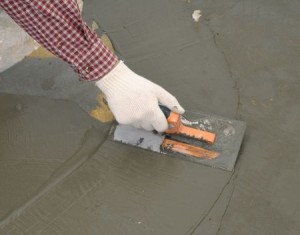
These days, you hear the words cement and concrete get thrown around as if they’re pretty much interchangeable to some people. In fact, cement is actually just one component of concrete. You wouldn’t have much luck building anything with cement alone. You might think of cement as the glue that holds the other parts of concrete together. For another analogy, think of cement as flour, and concrete as the cake.
Cement consists of just a few simple ingredients that are superheated and ground into a powder. These ingredients are gypsum, silicates, and metal oxides. Concrete mixes vary depending on their intended use, but they typically contain about 15% cement. The other 85% is composed of sand, stone aggregates, water and small amounts of chemical admixtures to aid in the bonding process.
Other ingredients that are sometimes components of concrete include fly ash and GGBFS, or ground, granulated blast furnace slag. So how does cement contribute to the formation of concrete?
When the cement comes in contact with the water, it starts a chemical reaction that causes all the component parts of the concrete to bind to one another. Over time, the mixture will transition from a thick paste to a solid block of concrete. The chemical admixtures help to catalyze the reaction and ensure a strong bond.
Thanks to this simple but remarkably effective chemical reaction, we’re able to build all sorts of things with strong, durable concrete. Take a look around our gallery page and see just a few of the many things we’ve been able to create with concrete.






